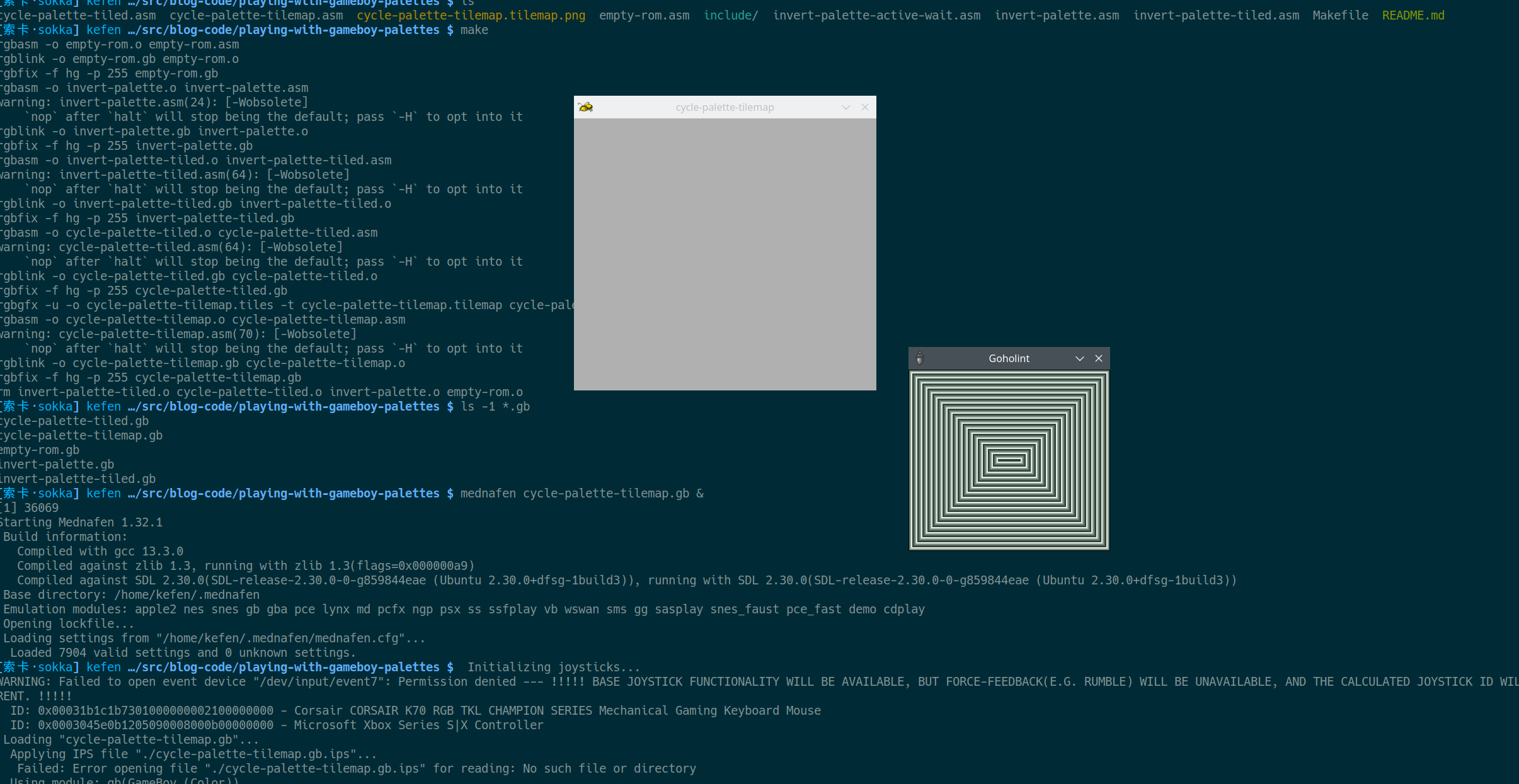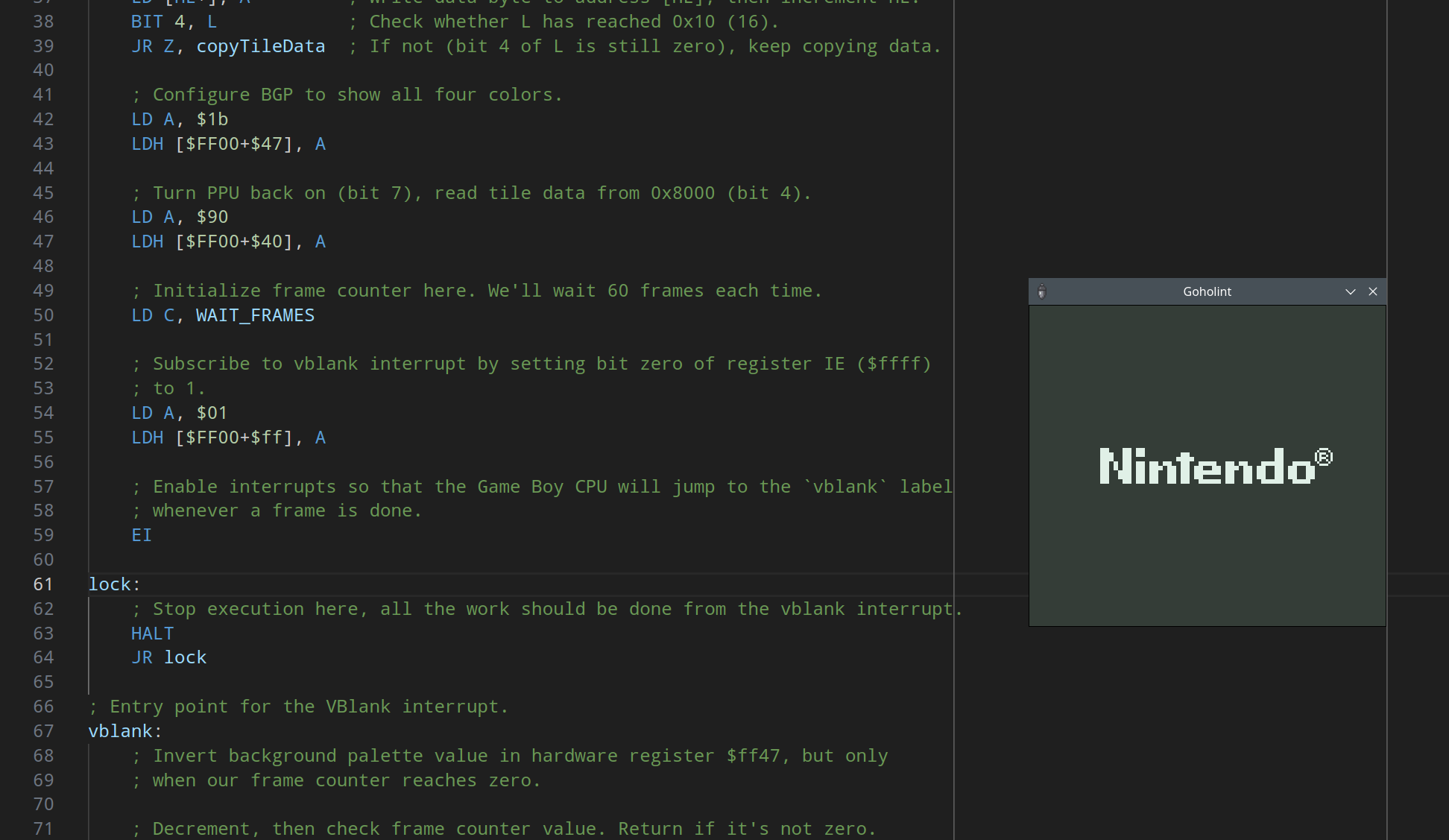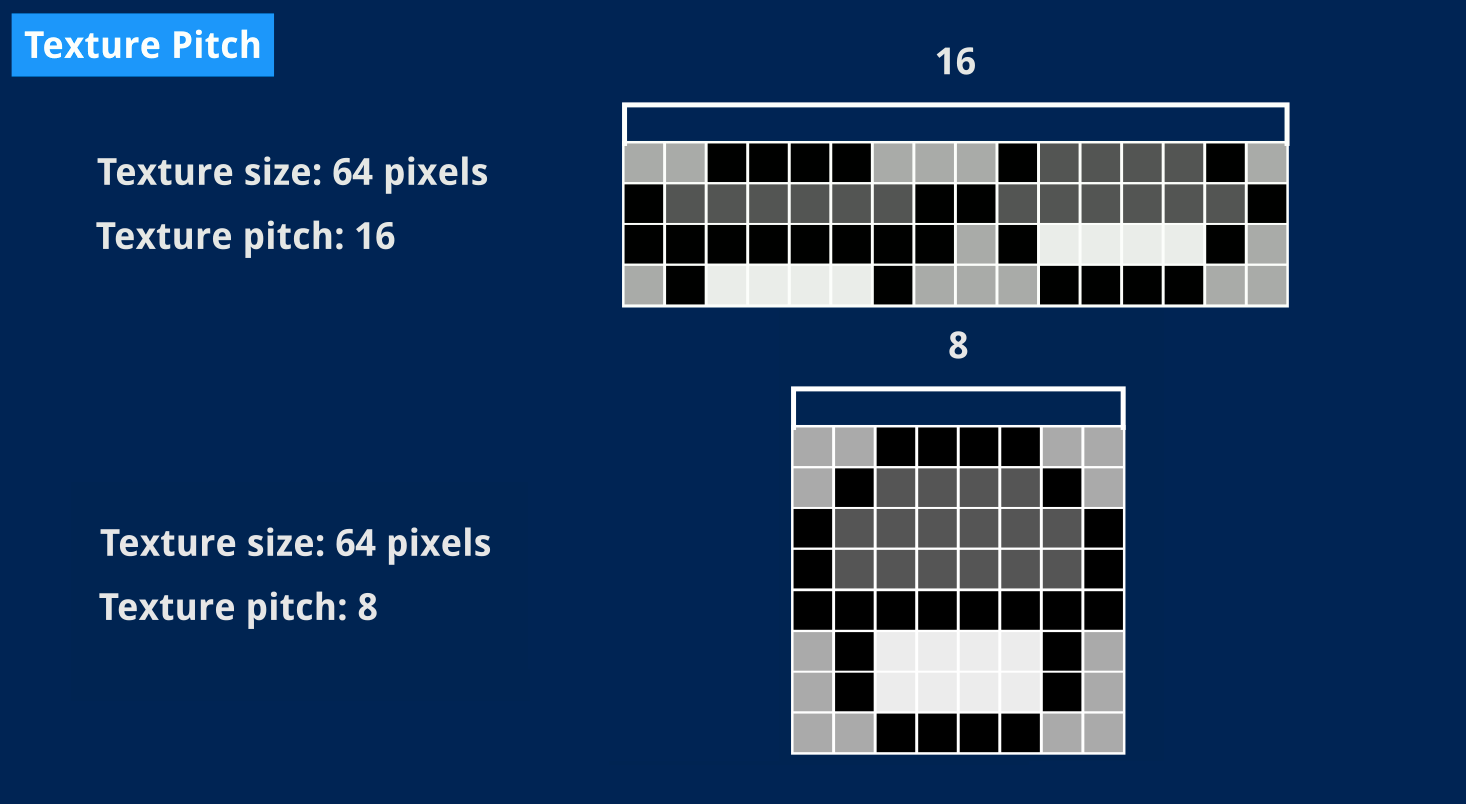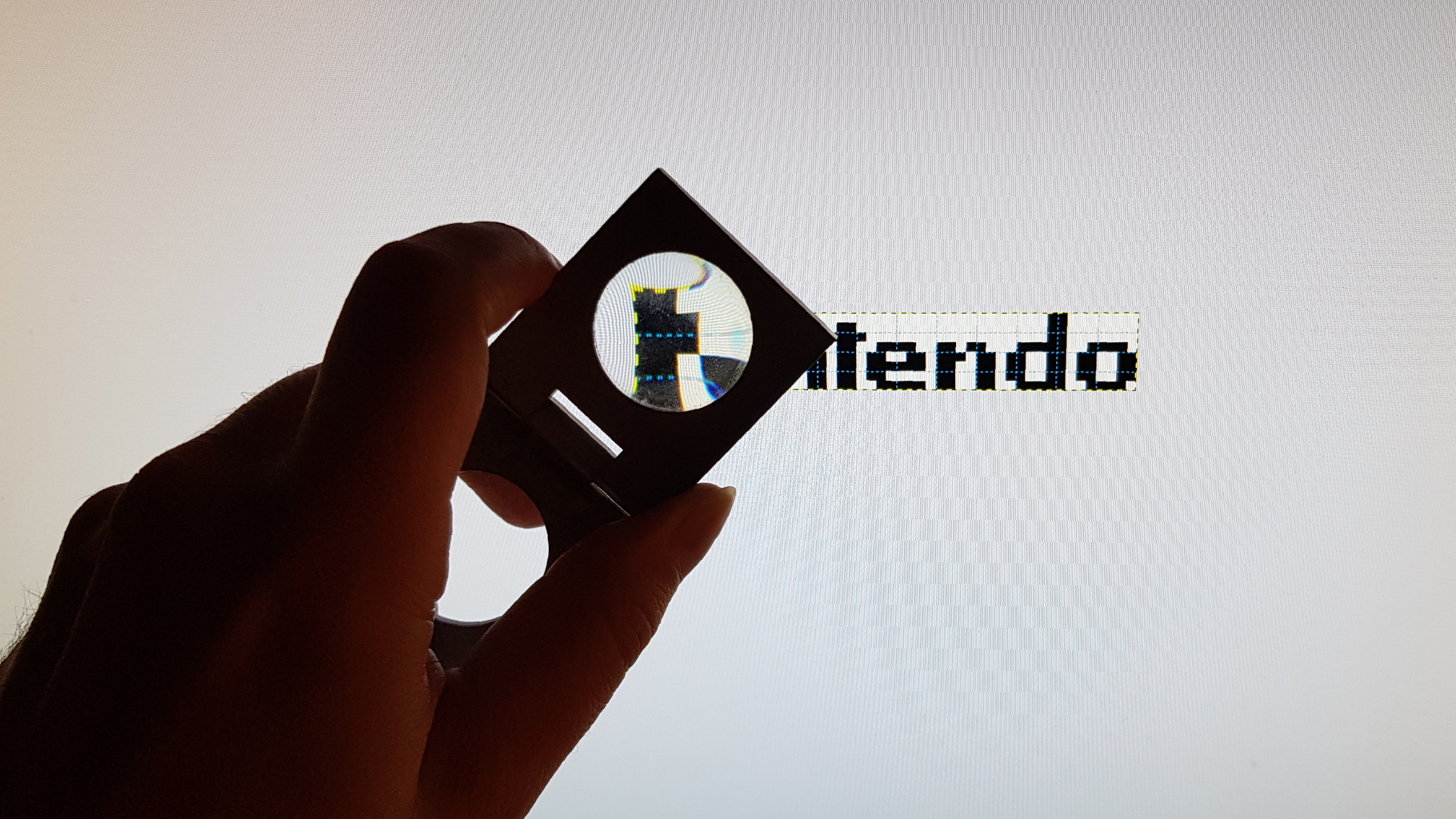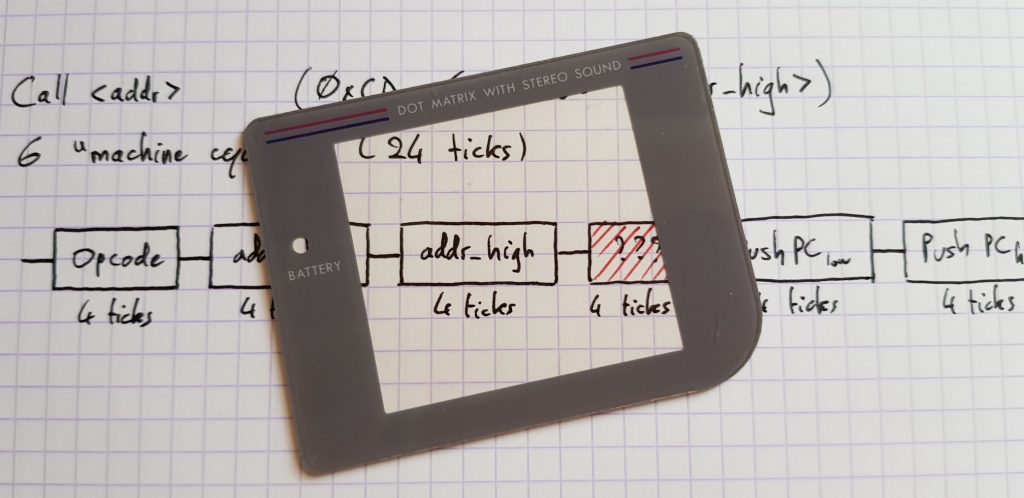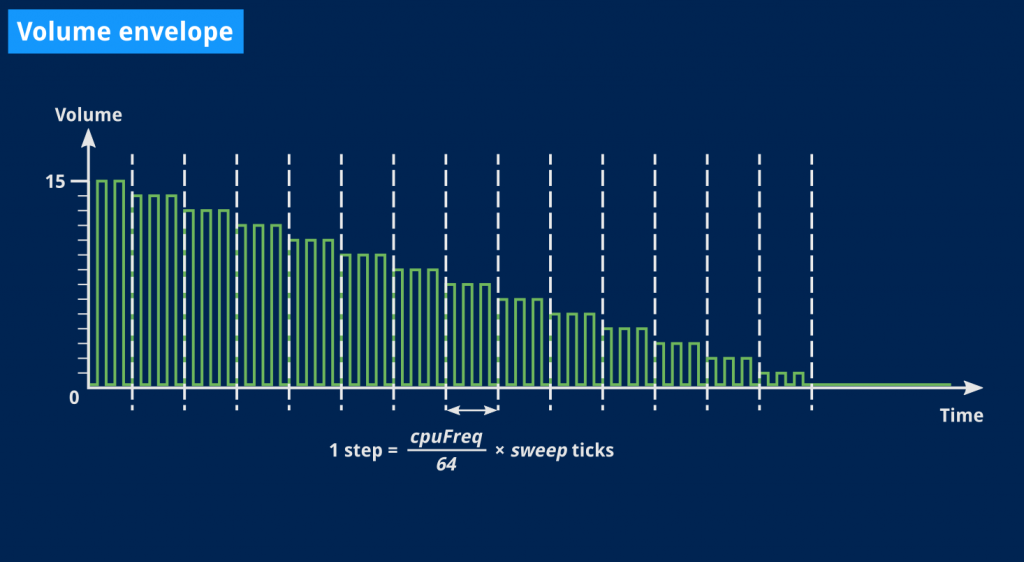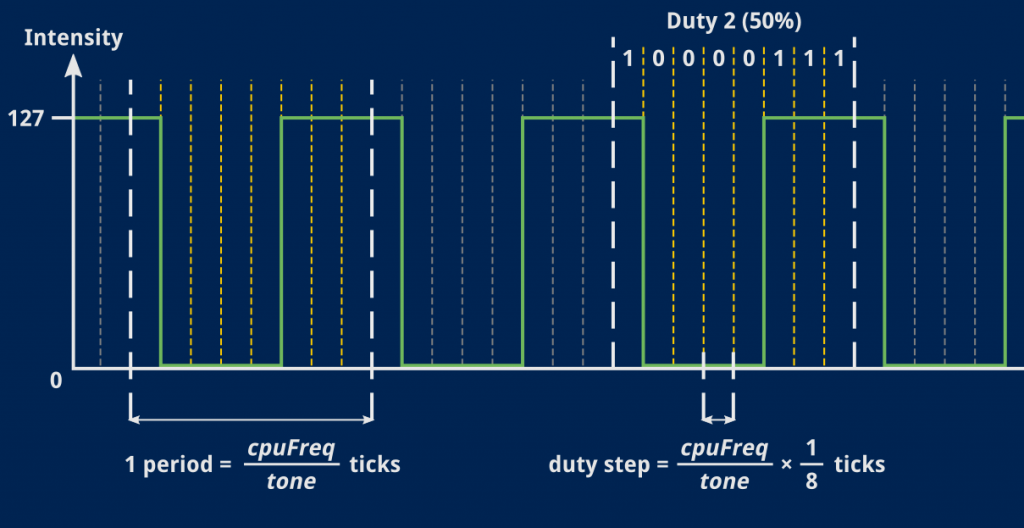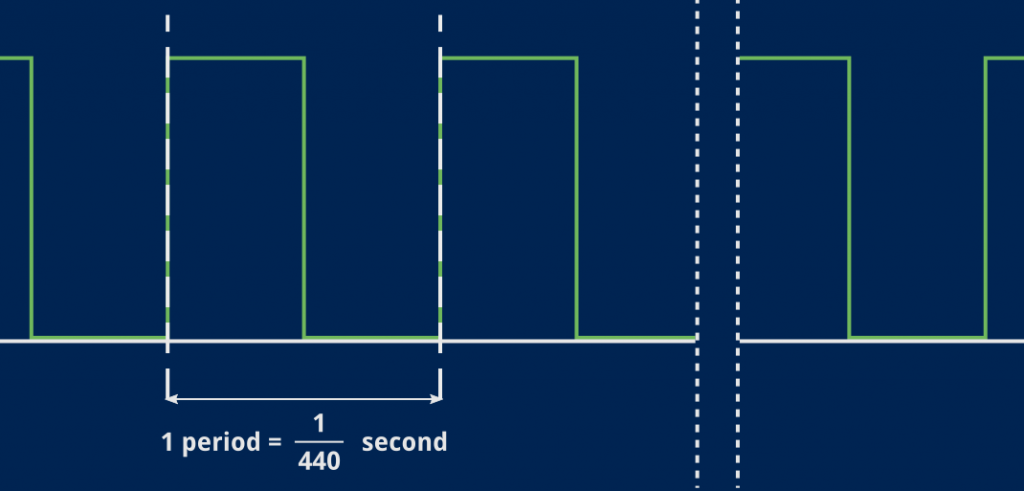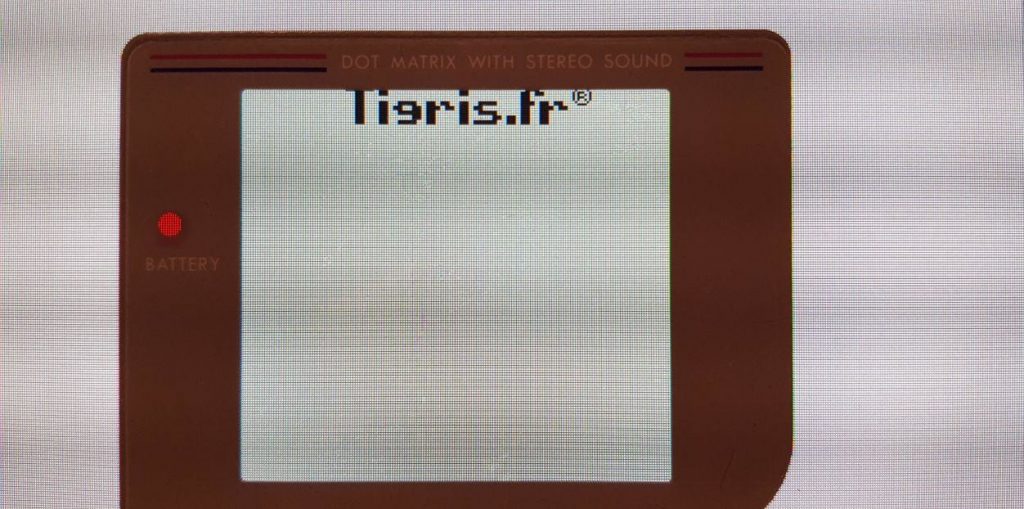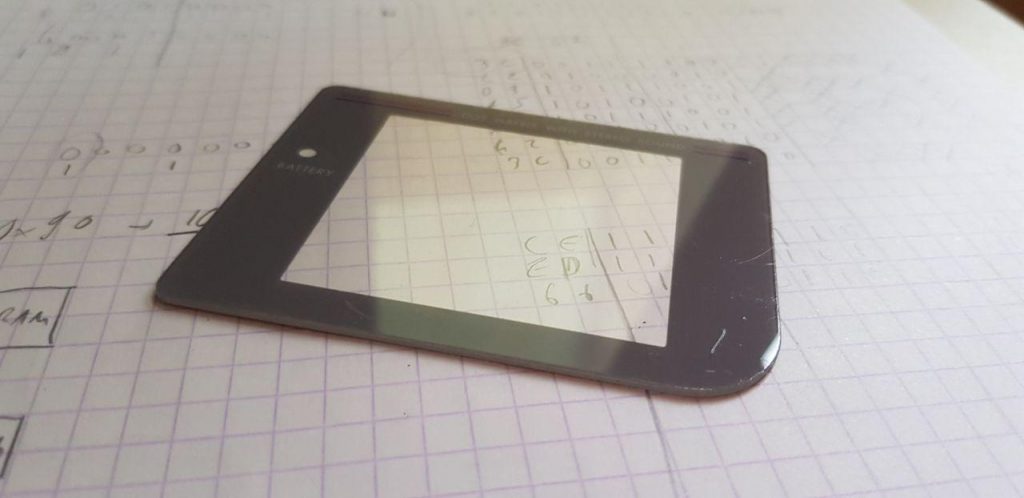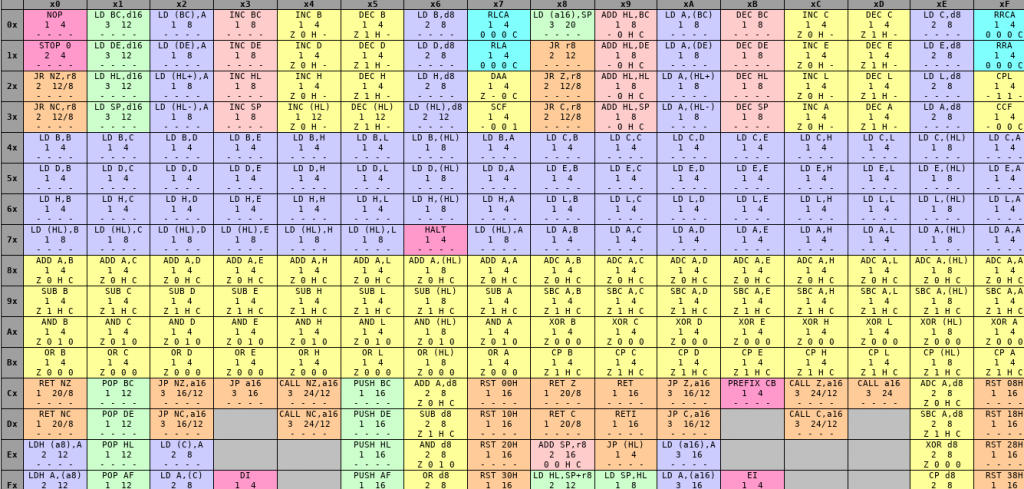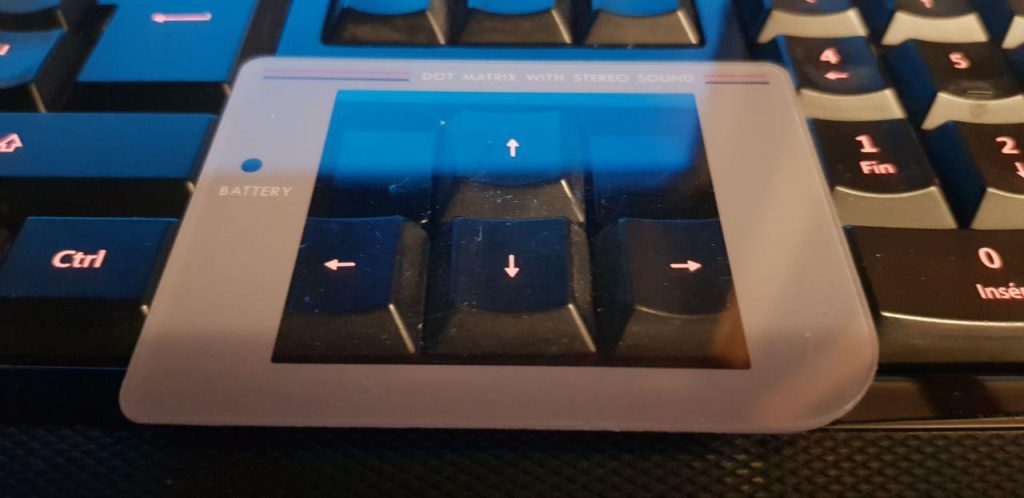How much difference a bit makes when forgetting it makes your ROM simply not work on proper emulators or original hardware.
Writing an emulator is really cool, but what about writing ROMs for a Game Boy emulator? Come see how to program interesting effects using only a color palette. It’s okay, I used plenty of pictures, I promise!
Directly writing data to a texture isn’t trivial, but it makes for interesting pictures when you get it wrong. Want to see a bunch of buggy screenshots?
Wow. Has it been two years already? Oh well… Anyway!
So hey, you remember how the Nintendo logo would scroll down when you turned on a Game Boy — and how writing enough of an emulator to see it was kind of the point of most of this blog?
A quick article describing a funny bug, and a nerdy warning against premature optimization.
We are so close! We now have scrolling pixels and sound. The pixels are scrolling a bit too fast and the sound is still kind of subpar. I won’t be trying to improve sound, but there should be something we can do about that speed issue.
All right, it took a few extra months, but we’re finally getting somewhere. This article is hopefully the last one about sound. The result isn’t fantastic, but it works. And for the time being, that will do!
After a long hiatus, I went from outputting crappy sound to outputting crappy sound in stereo. Would you like to know more?
The actual emulator I wrote and which prompted that series of articles on this very blog is finally functional enough that I decided to publish it on GitHub.
Do you know how sound works? Well, me neither, but I hope we can figure it out together!
A quick wrap-up of the last article, with bonus GIFs of the final result.
Another article that took longer than I planned because of palettes, but that I tried softening with more pictures, and actual screenshots this time!
A much longer — though heavily illustrated — read built on top of the previous article’s code, in which we finally get to show tiles on a low-tech display.
Where I try using crude animations to distract you from the fact I’ve put a lot of effort into turning a program that crashes into one that just hangs.
A promising start in which, after about 2000 words, I finally get to execute literally three bytes of machine code.
TL;DR: I started writing a Game Boy emulator in June 2018 and since then, at least three distinct people have expressed mild but polite interest in the details. I hope to show how it’s done, in mildly-to-heavily technical terms. It’s going to take a while but I hope it turns out marginally informative.

